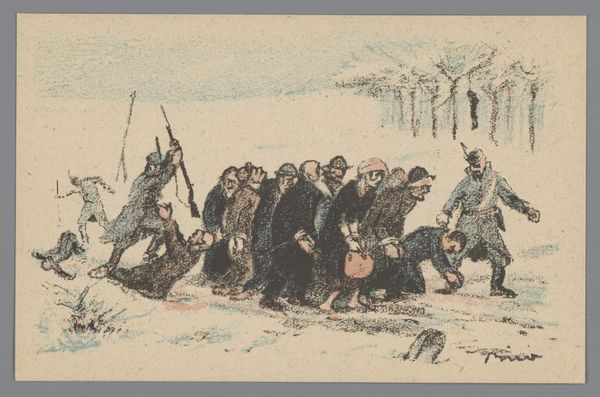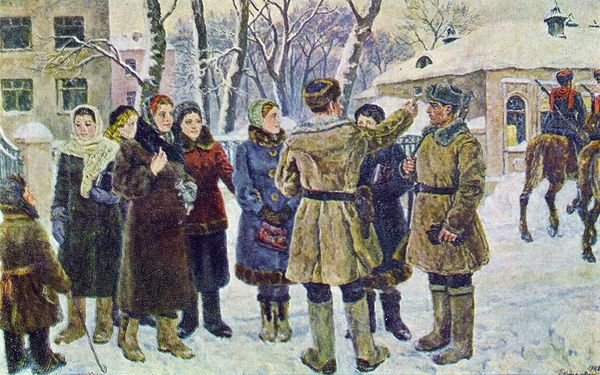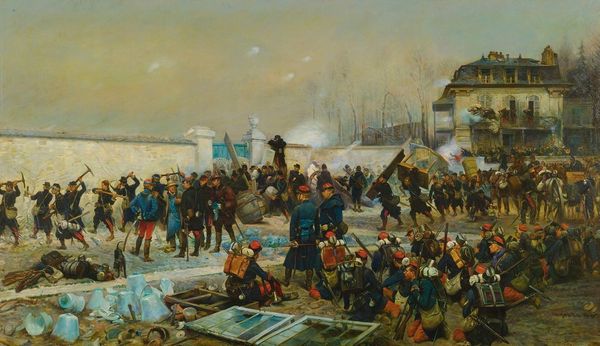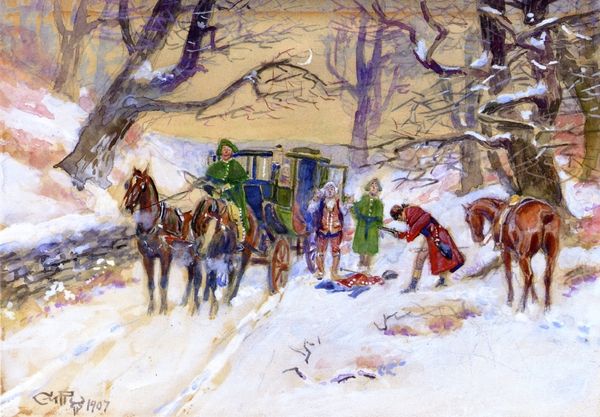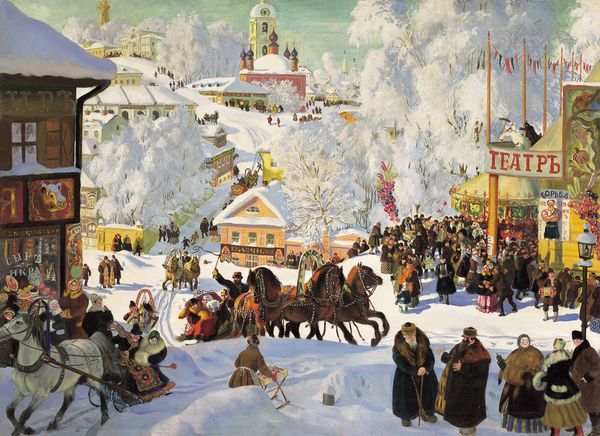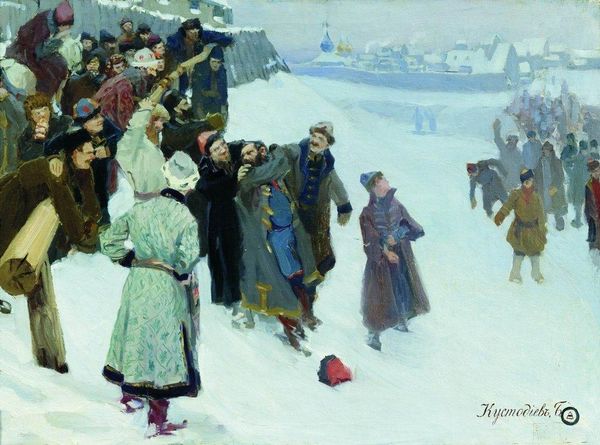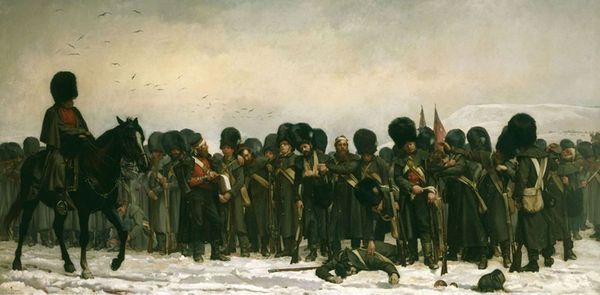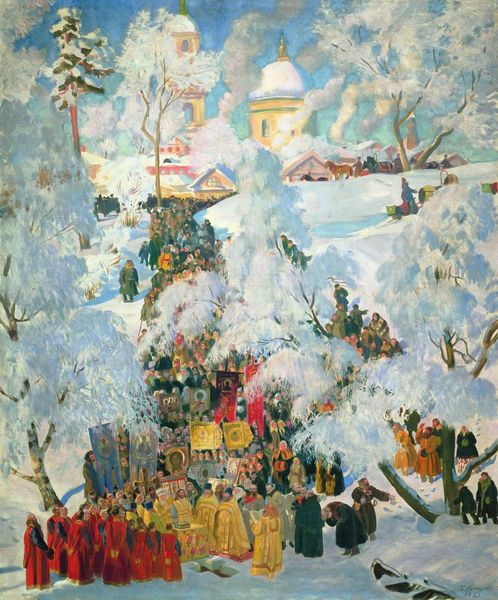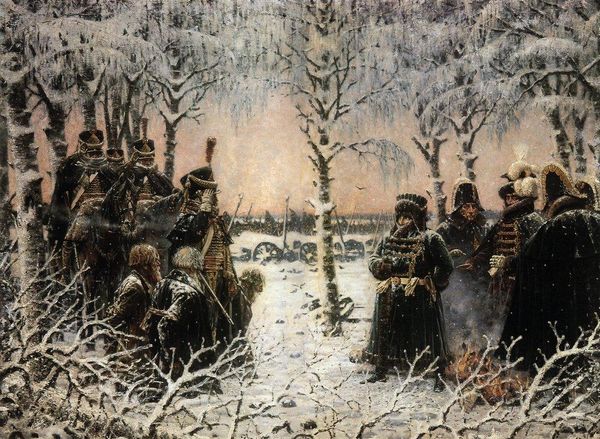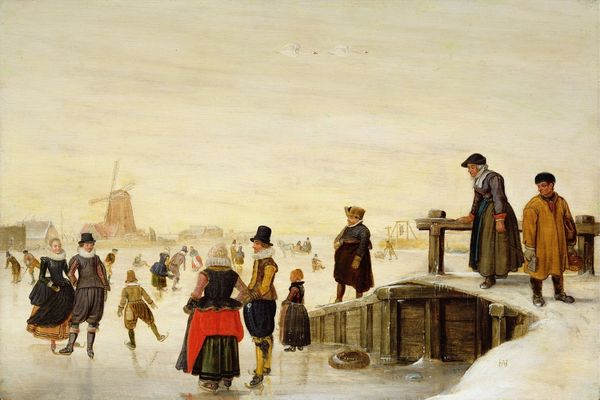
painting, oil-paint
#
portrait
#
narrative-art
#
painting
#
oil-paint
#
war
#
landscape
#
soviet-nonconformist-art
#
figuration
#
social-realism
#
oil painting
#
soldier
#
history-painting
#
realism
Dimensions: 159 x 241 cm
Copyright: Kukryniksy,Fair Use
Editor: Kukryniksy’s "Tania (The Feat of Zoya Kosmodemyanskaya)," created in 1947 using oil paint, depicts a stark, snowy scene. The subdued palette contributes to the painting’s somber atmosphere. I'm curious about how the historical context might have influenced the choice of materials and the overall composition. What do you see in this work, especially considering its materiality? Curator: Looking at this piece through a materialist lens, the use of oil paint is crucial. Post-war Soviet art often employed readily available, inexpensive materials to mass produce works idealizing the war effort and everyday working class citizens. Considering the state's control over artistic production at the time, the artists’ labor was directly intertwined with the state's ideological goals. Do you notice how the limited color palette and somewhat crude application of paint perhaps subtly undermine any sense of glory or heroism? Editor: I do. Now that you mention it, the textures and visible brushstrokes feel less about creating a realistic scene and more about the efficient creation of a narrative, perhaps even a form of propaganda. How might the setting contribute to the work? Curator: Absolutely. The setting itself, a humble village square turned into a stage for public execution, highlights the disruption of everyday life. The landscape isn’t merely a backdrop; it’s a silent witness to the violence. The use of oil paint also connects it to a longer tradition of history painting, attempting to enshrine a particular view of the Soviet experience into the material culture. Do you think this attempt succeeds, given the slightly unsettling texture of the materials? Editor: I think I understand. While the subject matter aims to be uplifting, the actual materials and the process behind creating the painting seem to reveal a more complex story about labor, ideology, and the limitations of artistic expression under state control. Thank you. Curator: Precisely. It’s through examining these material conditions that we can uncover a richer, and perhaps more truthful, understanding of the artwork and its context.
Comments
No comments
Be the first to comment and join the conversation on the ultimate creative platform.
